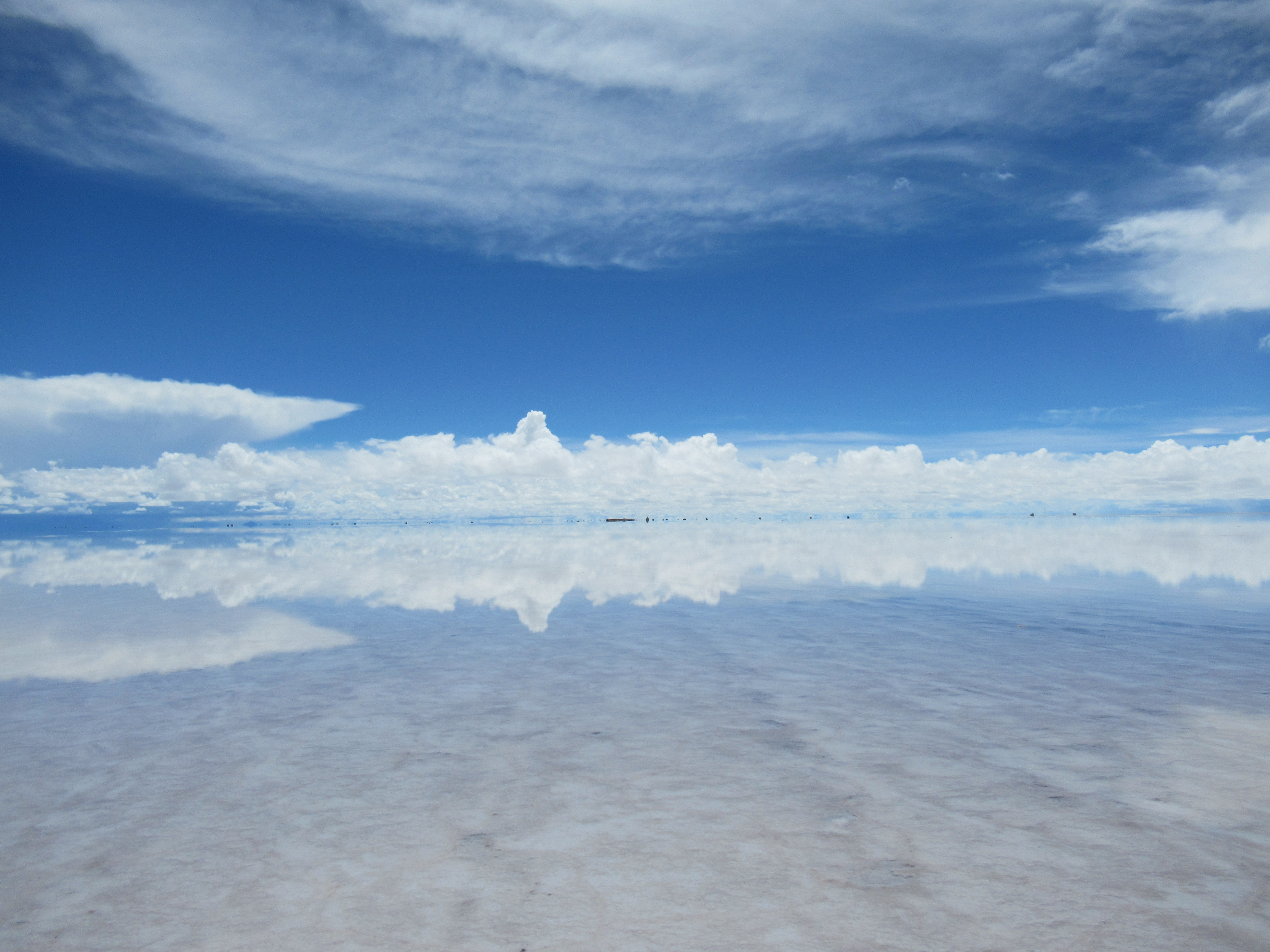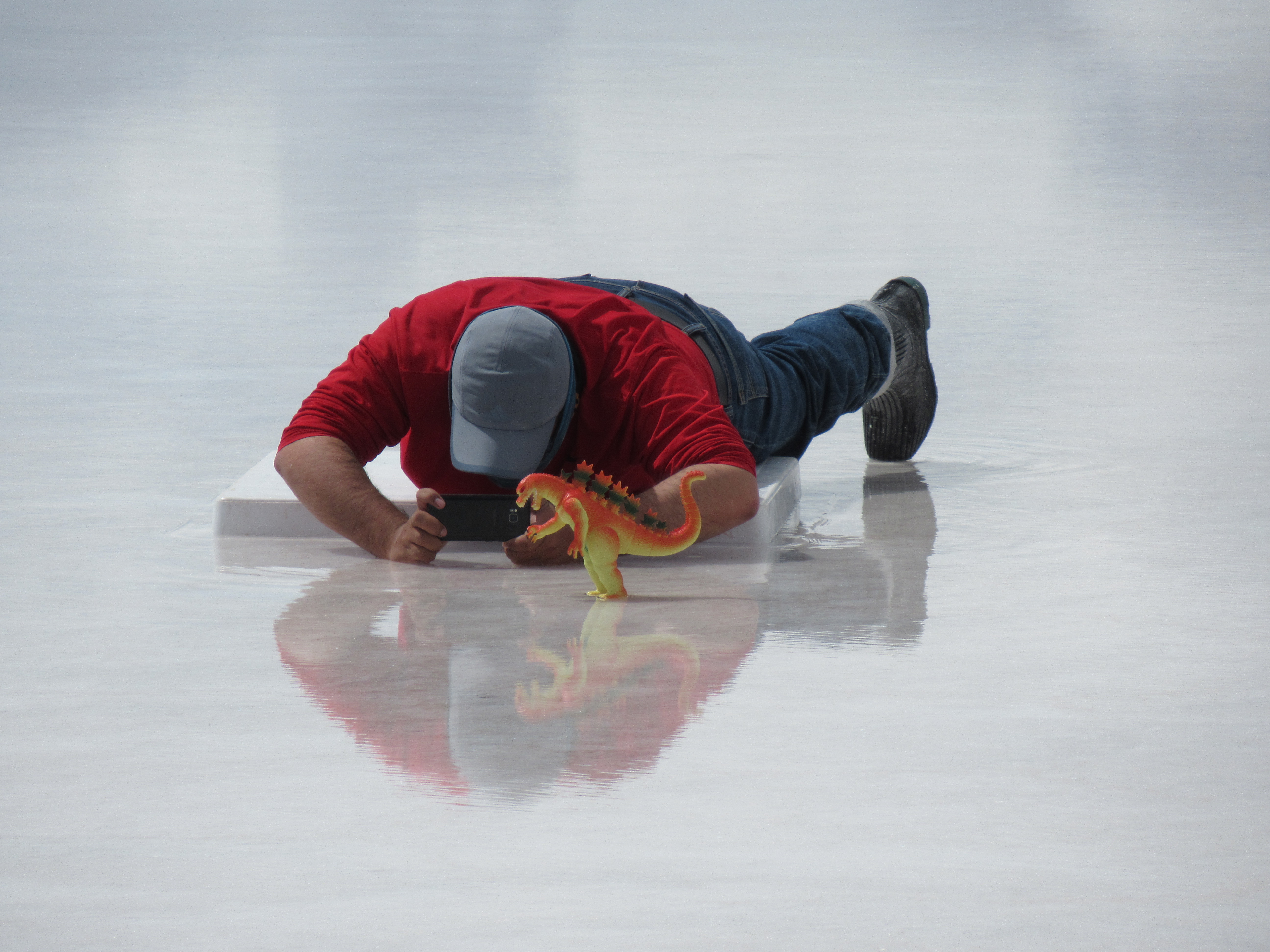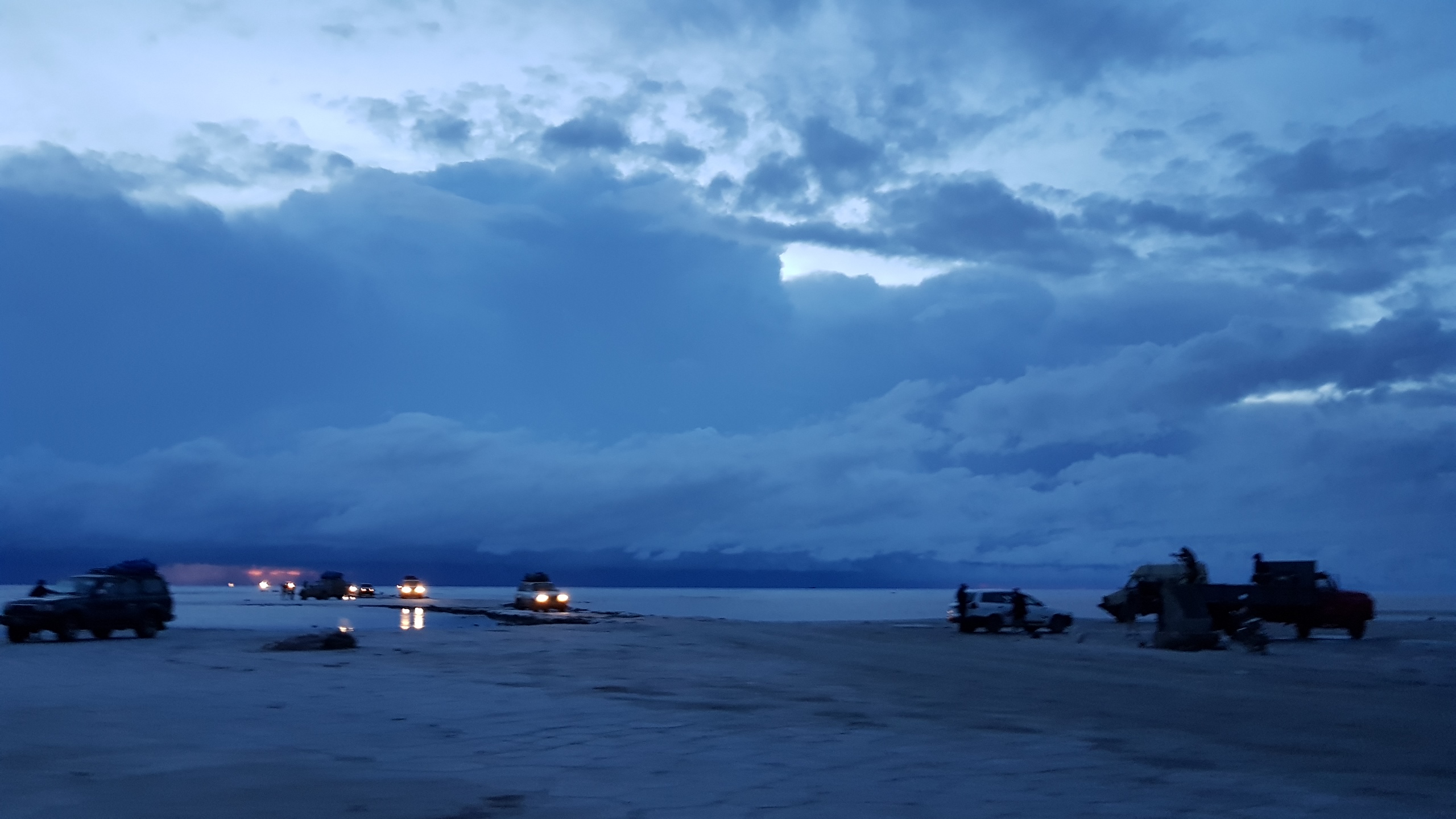Thursday, 31 January 2019
Uyuni, Bolivia
The only reason I’m here at the Uyuni salt flat is due to a chance conversation with my client’s CEO on my last day in their office. Whilst explaining my route, he asked if I was going to the Uyuni salt flat, as he had been a few years before. At that time it wasn’t on my radar but he was rather emphatic and said, “You must, you absolutely must.” So. Here I am.
I’d investigated a day trip on the salt flat a couple of weeks ago but it was US$425 for a trip that missed out more than half the tour and the interesting bits, Fish Island and the Volcano, as flooding prevented access. And if it was going to rain all day, it was hardly worth paying all that money if I wasn’t going to see anything. So nothing was booked. Play it by ear. Thought I.
Woke up to see blue sky and light clouds over the salt flat. OK. This might be a good day to visit. Ask at reception if they can organise a tour pronto whilst I have breakfast. Not possible, she says. All tours must be booked at least 24hrs in advance. You can book for tomorrow though, she says. Or you can do some internet research for another company (the hotel and tour company being part of same group).
Am in Colonial mode now.
No. Leave tomorrow. Want a trip today. Won’t be doing any internet research. Please can you ring tour company. She does. We speak. He’ll ring me back if he can arrange it. 5 mins later during breakfast, she comes with phone in hand.
Yes.
They can do it.
Well that wasn’t so difficult was it.
That’s how you do it.
Drive the half hour back to Uyuni to see the train cemetery. About 50 or 60 resting, rusting train engines sit on old track. Many have been daubed with graffiti. There’s an equal number of Toyota Land Cruisers. This is the tourist circuit.
Dating back to the 1860s, the trains came to serve the local tin and silver mines. Trains still serve the area and last night we had to wait in a nearby village whilst a 30 wagon freight train passed.
Plenty of tourists clambering on to the rusting hulks like being at an adult playground. A large black cloud approaches and only just make the Land Cruiser before it rains. Torrential rain. Uyuni is a basic town with plenty of backpacker hostels serving the salt flat. Roads are a bit manky and potholed and there’s nothing of note to make you want to stay.
So we drive to the nearby village of Colchani. An adobe village with a few new brick dwellings. A number of salt factories are here. Once inside the corrugated steel factory with salt rock walls, the rain lashes down. Real heavy, intense rain, the likes of which prevent us hear each other speak under the corrugated steel roof due to the immense noise. Don’t think I’ve experienced rain that intense before. It’s to become a feature of the day though.
Salt manufacturing process is as follows. Rake the salt into piles out on the salt flat. Leave to drain a few days. Load on to truck and bring to factory (small corrugated steel shed). It’s laid out on a metal tray and fires are lit underneath to properly dry it out. Once dried, it’s mixed with iodine and then ground in a milling machine until it’s a powder consistency. Packed into plastic bags which are then sealed over a gas flame. Generally produced for the domestic market, there are ten small scale factories like this doing it. Not wanting to pass through various borders with a white powder in a plastic bag, purchase the rock salt variety in a little glass bottle. One for the travel cupboard.
Picnic lunch planned for sitting out on the salt flat under a clear blue sky. However. Torrential rain continues. Driver, guide and myself agree that it makes sense to go back to my hotel and eat the picnic lunch there.
As soon as the rain came, it disappears and blue sky and patchy clouds return. Drive on to the salt flat. There’s about one to two inches of water lying on the flat. This is good and bad. The good is that the salt flat acts like a giant mirror. The bad is that we have to drive about 10km/hr to stop saltwater getting into the engine and electrics and on the chassis as it’s corrosive. Ordinarily they can drive at 80-90km/hr when it’s dry so the places we’re going to take 10mins rather than the 1hr it actually takes.
First stop is what look likes a bubbling rock pool. Assume it’s a thermal spring but am told it’s a chemical reaction between the minerals below. Plenty of locals are rubbing the water into their skin as it has health properties apparently.
The salt flat is the largest in the world and is approximately 80 miles long by 50 miles wide. It’s apparently a NASA emergency landing spot. Salt is 120m deep and there’s 50m of water beneath that. Formed over millions of years, it was, obviously, a sea at first which then evaporated.
Drive for an hour into a remote part of the flat away from the tourist trail. The water here is perhaps less than an inch deep and very calm with no ripples to disturb the mirror like surface. This is awesome. Never been anywhere like it. Certainly up there with Antarctica. That’s how impressive and awe inspiring this place is. My client’s CEO was right. Glad I came.
There’s no line on the horizon and, like Antarctica, absolutely no sense of scale. The water reflects the clouds and sky above. Mesmerising. Do look at the photos and video below to give you an idea.
My guide has been clutching a toy dinosaur in the Land Cruiser all day. Now I know what it’s for. As there’s no sense of perspective in the background, you can place small objects in the immediate foreground and then place people about 10m away to give a surreal photo (see the dinosaur photo below). I now have a giant orange and yellow Godzilla towering over me. Even though the toy is 4inches high. Quite a good effect.
A few kilometres away is a wayfinder point. Built of salt rock it was built for the Dakar rally which now, so I am told, runs in South America. As the salt flat is featureless they built this and a hut to act as a reference point. A young bride is standing on the wayfinder point in her bra and trousers trying to wriggle into her white wedding dress. She’s being assisted by elderly woman wearing bright coloured skirts, which my guide says suggests they’re from La Paz, as the locals wear dark coloured skirts.
Dark storm clouds gather around the rim of the salt lake but incredibly lucky to have experienced the salt flat with blue sky and sun.
Return to the salt flat for sunset. The dark storm clouds are now closing in on the flat and not convinced we’re going to get the money shot of the orange glow of a radiant sunset reflecting off the natural mirror. Guide produces a bottle of Bolivian red wine and enjoy a glass and a good chat waiting for the sunset. Which never happens. The storm clouds are rolling in. Lightning illuminates the darkened mass of clouds to the south and the west. Wind picks up. We go.
The lightning intensifies after dinner and treated to yet another awesome display (see the hyperlapse video below).
Cracking end to a cracking day. Many memories made.

































One response to “40. You must, you absolutely must”
Truly amazing! Your photos have certainly captured some natural wonders. Thank you for your detailed presentation. The only salt place that I have seen that doesn’t even compare is in Jordan along the shores of the Dead Sea. Your visit was definitely a highlight and not to be missed.